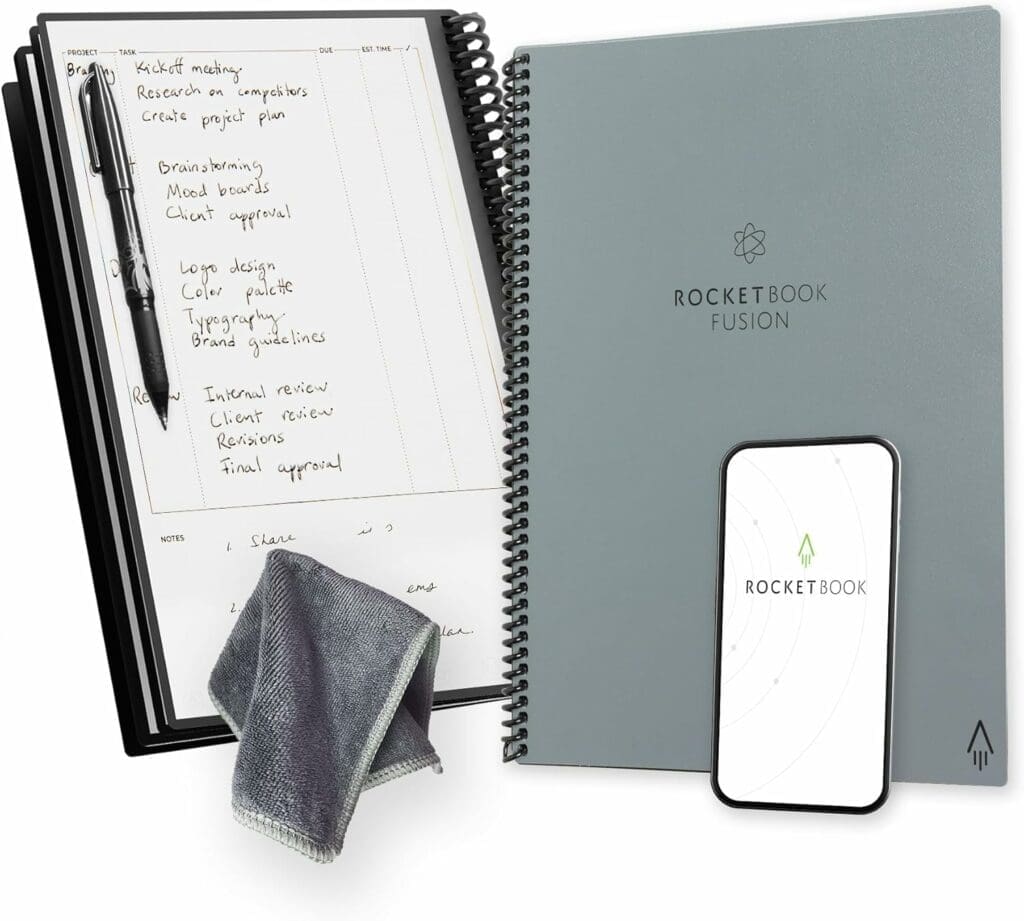Learn how to write a small business plan that works. Step-by-step guide with examples, financials, and proven strategies to avoid common mistakes.
Running a small business often feels like trying to build a house without blueprints — you know what you want it to look like, but every time you pick up a hammer, you’re guessing.
A business plan is that missing blueprint. Without one, you’re left juggling numbers, chasing customers, and putting out fires instead of growing steadily.
The truth? Learning how to write a small business plan doesn’t have to be stressful. With the right framework, you can break it into manageable steps, avoid the most common pitfalls, and walk away with a plan that not only impresses investors but actually works for you.
Let’s dive into the proven steps that will help you create a plan designed for growth, stability, and fewer late-night headaches.
Importance of a Small Business Plan
A lot of owners wonder if writing a business plan is worth the effort. “I know my business inside out — do I really need to put it on paper?”
The answer is yes, you need to write a business plan and here are some reasons why:
- Clarity: It forces you to define your mission, vision, and goals.
- Funding: Investors and banks almost always require a written plan.
- Direction: It acts as your GPS — keeping you from veering off-course when challenges pop up.
- Accountability: When progress stalls, you have a roadmap to revisit and adjust.
Skipping the plan is like skipping a budget — things might run smoothly for a while, but eventually you’ll hit chaos! Now that you know why, let’s get into how to write a small business plan.
Key Sections of a Small Business Plan Explained
Every traditional business plan is structured the same way, whichever industry you belong to. It includes the following essential sections: Executive summary, Company Overview, Market Analysis, Products/Services, Marketing/Sales Plan, Operatios and Financials. The specifics are what differ.
Did you know that there are at least 9 types of business plans serving varying purposes.? Check them out!

Step 1 – Write a Strong Executive Summary
Your executive summary is the elevator pitch of your plan. Most people make the mistake of writing it first — but here’s a better tip: write it last. That way, you’ve already fleshed out the details, and summarizing is easier.
What to Include
- Company name, location, and what you do.
- Your mission statement in plain English (not corporate jargon).
- An overview of your products or services.
- A snapshot of financials and growth goals – we have asmall business plan template to help you with your number crunching!.
Example of an Executive Summary
Imagine you run a plumbing business:
“ABC Plumbing is a locally owned business serving [City]. Our mission is to provide reliable, affordable plumbing solutions for homeowners. With 15 years of combined experience, our team specializes in emergency repairs, bathroom renovations, and eco-friendly water systems. Over the next 3 years, our goal is to expand into neighboring towns and double revenue through service diversification.”
Short, clear, and straight to the point.
Step 2 – Define Your Company Overview and Mission
Here’s where you explain the “why” behind your business. Think of this section as your “business identity card.” It tells readers who you are, why you exist, and what makes you worth betting on.
What to Include
| Your “Why?” | How to |
|---|---|
| Mission Statement | Keep it clear and short (1–2 sentences). It should answer: Why do we exist? Example: “Our mission is to make eco-friendly plumbing affordable for families in Toronto.” |
| Vision Statement | Paint a future picture: where do you want to be in 5–10 years? Example: “To become the leading provider of sustainable water systems in Ontario by 2030.” |
| Core Values | Values shape decisions. Pick 3–5 principles that define your culture. Example: Integrity, reliability, innovation, customer-first service. |
| Business Structure | Note whether you’re a sole proprietorship, LLC, corporation, or partnership. This signals professionalism and gives investors clarity on legal liability. |
| Company History (if relevant) | Share a short background (when founded, milestones achieved). Example: “Founded in 2020, ABC Plumbing has grown from a one-person operation into a five-member team.” |
| Current Goals | Outline 1–3 near-term goals (expansion, revenue targets, product launches). |
💡 Pro Tip: Investors often skim this section, but your team (and you) will use it as an anchor when decisions get tough.
Step 3 – Conduct a Market Analysis
This is the section where you prove you’ve done your homework. It shows you know your customers, your competitors, and the landscape. Too many small businesses skip this, but knowing your market separates the dreamers from the doers.
Key Elements of a Strong Market Analysis
| Element | How to Include |
|---|---|
| Industry Overview | Describe the industry size, growth trends, and market conditions. Example: “The home repair industry in Toronto is valued at $500M annually, with a 7% growth rate due to rising homeownership and aging infrastructure.” |
| Target Market | Who are your ideal customers? Be specific. Break it down: Demographics: Age, income, location. Psychographics: Pain points, buying behavior, lifestyle / spending habits. Example: “Our target market is middle-income homeowners aged 35–60 in Toronto suburbs who value same-day service.” |
| Customer Segments | If you serve different groups, define them (e.g., homeowners vs. contractors; residential vs. commercial) |
| Competitor Analysis | What are others doing well, and where can you stand out? Identify 2–3 direct competitors. Note their strengths, weaknesses, and market share. Example: XYZ Plumbing: Strong online reviews, higher pricing. 123 Plumbing: Cheaper rates, limited service hours. |
| Competitive Advantage | Explain how you are different (better service, faster delivery, eco-friendly options). |
| SWOT Analysis | Create a quick table to listing your Strengths, Weaknesses, Opportunities, and Threats Example: Strengths: Fresh, organic ingredients Weaknesses: Small number of staff Opportunities: Rising demand for gluten-free Threats: Big-box chains entering area |
💡 Pro Tip: Don't overload this section with fluff data. Keep this practical. Don’t drown in data — focus on what is relevant to your strategy and on what you will DO with the indights. Investors what to see how the analysis shapes your decisions.
If this step feels heavy, we’ll do it for you. Book a free 20-minute plan audit and leave with a clear next step:
Step 4 – Outline Products and Services
This section is simple but powerful. Readers want to know what you’re selling, why it matters, and why anyone should care.
What to Include
- A description of your products or services.
- How they solve customer problems.
- Your competitive advantage — price, speed, quality, innovation.
- Any intellectual property, trademarks, or unique processes.
Example:
A bakery might emphasize organic ingredients, custom cakes, and same-day delivery. A construction company could highlight sustainable materials or faster turnaround times.
Step 5 – Create a Marketing and Sales Plan

Without sales, your business plan is just a nice story. This section shows how you’ll actually attract and retain customers.
Key Subsections
- Marketing Plan Strategies: Online ads, social media, partnerships, community events.
- Sales Funnel: How you turn leads into paying customers.
- Customer Retention: Loyalty programs, follow-ups, guarantees.
- Pricing Model: Competitive yet profitable.
📌 Example: A fitness studio might focus on Instagram ads targeting local zip codes, referral discounts for members, and a subscription-based class model.
Step 6 – Build Your Operations Plan
Operations is where most plans fall flat — and it’s also where small businesses either sink or swim.
What to Include
- Daily Operations: Hours, staffing, processes.
- SOPs (Standard Operating Procedures): Documented workflows.
- Facilities and Equipment: What you own, rent, or need.
- Key Roles: Define who does what — from management to frontline staff.
💡 Pro Tip: Even a one-page SOP can prevent costly mistakes. A written process for handling customer complaints, for example, keeps your reputation intact.
Step 7 – Develop Financial Projections
This is the section most people dread, but it’s one of the most important. Investors want to see numbers, but even if you’re bootstrapping, you need this for your own clarity.
What to Include

- Revenue Forecast: Expected sales over 1, 3, and 5 years.
- Cash Flow Projection: Money coming in vs. going out.
- Break-Even Analysis: How much you need to sell before you stop losing money.
- Startup Costs: Equipment, licenses, marketing.
💡 Pro Tip: Don’t inflate numbers to “look good.” Realistic, even conservative estimates show you understand your business.
💡 Pro Tip: If this step feels heavy and you are not sure your numbers are realistic, we’ll do it for you. Book a free 20-minute plan audit and leave with a clear actionable next step
Step 8 – Update Your Business Plan Annually
This is an often overlooked step by many small business owners in the hustle and bustle of running their business. A business plan is not meant to be a “done and dusted exercise!”
It should be treated as a living document and reviewed at least once a year.
Want a pro to do this part? Book a 20-minute plan audit
Common Mistakes in Small Business Planning (and How to Avoid Them)
Even the most determined entrepreneurs can stumble when writing a business plan. The good news? Most mistakes are easy to spot — and easier to avoid if you know what to look for. Here are six common ones:
Overestimating Your Revenue
Hope is not a strategy. Base numbers on real data. It’s tempting to believe that customers will line up the moment you open your doors. But many owners assume overly optimistic sales forecasts without solid proof.
Example Mistake: “We expect to capture 20% of the local plumbing market in Year 1.”
👉 Reality check: Unless you’ve got an unbeatable product or massive budget, that’s unlikely.
How to Avoid It:
- Base projections on market research and industry benchmarks.
- Use conservative, middle, and best-case estimates.
- Revisit forecasts quarterly to stay realistic.
Underestimating Your Costs
From rent and insurance to marketing and payroll, expenses pile up faster than expected. Many owners forget “hidden costs” like software, licenses, or unexpected repairs. Always budget more for marketing and overhead than you think.
Example Mistake: A bakery budgets for flour, sugar, and staff wages but forgets equipment maintenance and packaging costs.
How to Avoid It:
- Build a detailed expense sheet with fixed, variable, and hidden costs.
- Always add a 10–15% buffer for surprises.
- Use tools like a cash flow projection template to stay ahead.

Ignoring Your Competition
Writing “we have no competition” is a giant red flag for investors. Every business has competition — even if it’s indirect!
Example Mistake: A new yoga studio claims no competition because there’s no other studio nearby, forgetting that gyms and online classes are alternatives.
How to Avoid It:
- Identify direct competitors (same product/service).
- Identify indirect competitors (alternative solutions).
- Explain how you’ll stand out (better service, niche focus, pricing strategy).
Being Too Vague
A plan full of buzzwords but no specifics won’t cut it. “We will be the best in customer service” is nice, but how?
Example Mistake: Writing “We’ll grow through digital marketing” without specifying channels, budget, or strategy.
How to Avoid It:
- Be specific: “We’ll use Facebook Ads with a $500 monthly budget to target homeowners in the 12345 zip code.”
- Add clear timelines and KPIs (key performance indicators).
Forgetting to Update the Plan
A business plan isn’t a one-and-done project. Markets shift, competitors evolve, and customer needs change.
Example Mistake: A restaurant sticks to its original menu from five years ago even though demand for gluten-free and vegan options have skyrocketed.
How to Avoid It:
- Review your plan at least once a year.
- Update financial and marketing tactics regularly.
- Treat it as a living document, not a dusty binder.
Writing Only for Investors
Some entrepreneurs write their plan as if it’s just a bank loan application, filling it with jargon but forget it also needs to be useful for running the business.
How to Avoid It:
- Write for yourself and your team first, investors second.
- Keep it practical and actionable.
- Use plain language over corporate buzzwords.
Free Small Business Plan Template and Resources
Why reinvent the wheel? Use these resources to save time:
- 📥 Editable Business Plan Template (Word) – To edit and build your own plan
- 📊 Business Plan Template PDF Reference Guide – Clean, ready-to-read guide. Use hand-in-hand with the editable template
- ✅ Business Plan Checklist (PDF)
- 📝 One-Page Business Plan for Busy Owners
- ✅ Mistakes & Fixes Comparison Table (PDF)
- ✅ Financial Projection Calculator (Excel)
👉 All available in the free Business Plan Bundle to download.
Working through a small business plan template is not up your alley and you need this done for you? For a Done-For-You Business Plan Service — click below to book a service discussion meeting.
Additional Helpful Tools
Helpful Tools for Documentation

By keeping your planning materials organized makes updating your business plan easier.
Helpful Products:
- 🖨️ BROTHER HL-L2350DW Monochrome Laser Printer – useful for printing planning drafts and finalized business plans
- 📕 ROCKETBOOK Smart Reusable Notebook – No more wasting paper – this notebook has 7 different page styles for planning, listing, goal setting, note-taking, sketching, and sharing big ideasgreat for iterative planning and revisions
- 💾 SEAGATE Portable 2TB External Hard Drive – for securely storing business plan versions and planning documents

Related Articles
- Essentials of a Business Plan. What You Need to Know
- Why Write My Business Plan – 7 Reasons For Small Businesses
FAQs on How to Write a Small Business Plan
What are the main steps for how to write a small business plan?
Start with an executive summary, define your company, analyze the market, outline products/services, create a marketing plan, detail operations, and build financial projections.

How long should a small business plan be?
Most are 10–30 pages. A one-pager works as a “quick guide” for internal use, but banks/investors usually want more detail, and frankly, so should you for internal use.
Explain the key sections every small business plan must include?
Executive summary, company overview, market analysis, products/services, marketing/sales plan, operations, and financial projections.
Do I really need a business plan to get funding?
Yes. Banks and investors almost always require one — but even if you’re self-funded, it keeps you on track.
Can I write a business plan without professional help?
Absolutely. Many owners do — especially with templates and guides, but you must understand how to use the plan. A consultant can add polish and guide on implementation, but you can create a solid plan yourself.
Conclusion – Key Sections of a Small Business Plan Explained
Writing a small business plan doesn’t have to feel like pulling teeth. With a clear structure, realistic numbers, and a little discipline, you’ll have a document that not only impresses lenders and investors but actually helps you run your business.
Start small, write one section at a time, and don’t forget to revisit it regularly.
📌 Ready to skip the overwhelm of running your business? Download the free Business Plan Bundle and get templates, checklists, and worksheets to guide you every step of the way. Want a Done-For-You solution? Contact BCINC for assistance!
Related Articles
Why Create a Business Plan? – How This Helps Growth
References
https://www.news24.com/fin24/entrepreneurs/why-you-really-need-a-business-plan-20220523

